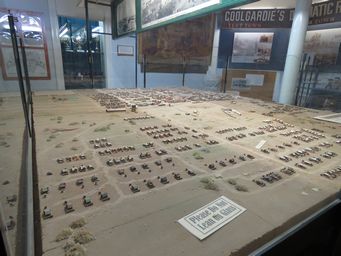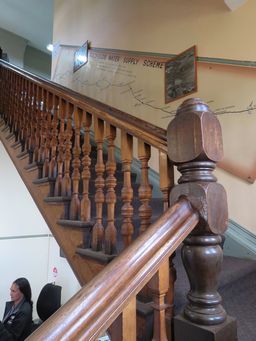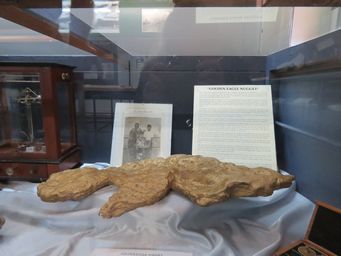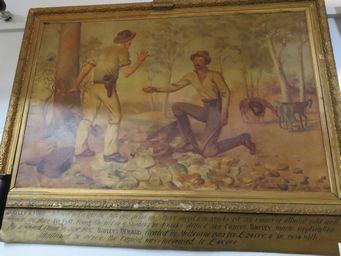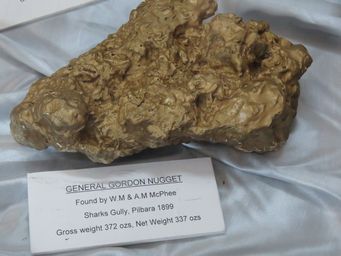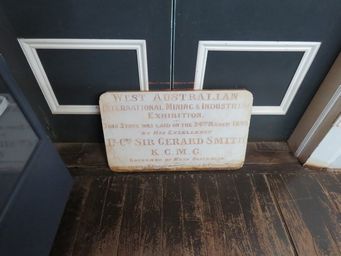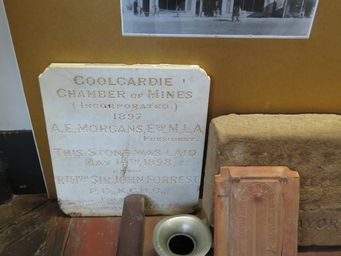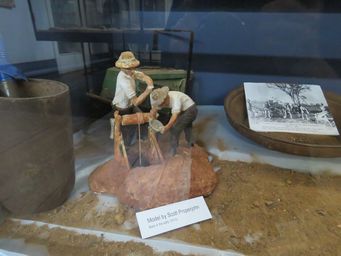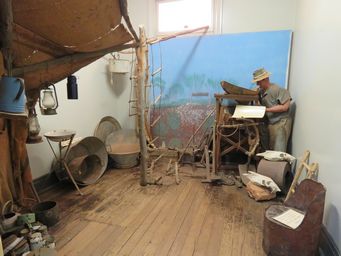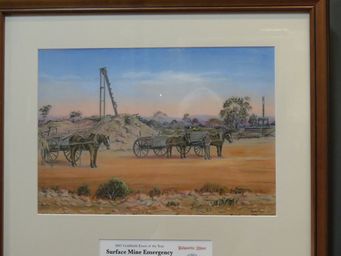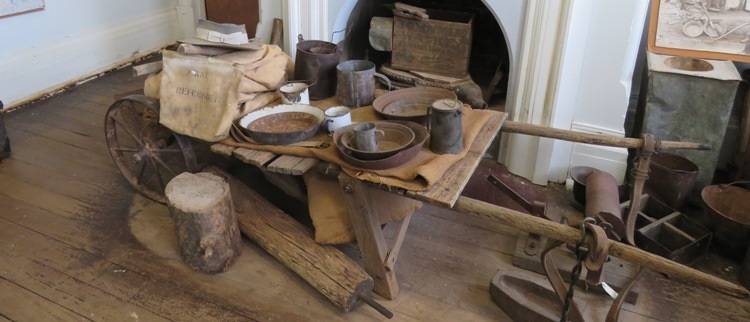Australia So Much to See
A model representing Coolgardie in the late 1890s (below), when it was the third largest town in Western Australia. There was
a hospital, 14 doctors and 13 Chemists (pharmacists). There were 6 dentists.
There were 6 banks and 2 stock exchanges, 4 auditors, 16 accountants and 17 lawyers. Three breweries supplied 23 hotels. There were 6 drapers, 7 bakers, 14 bootmakers, 39 storekeepers, 7 butchers, 9 tailors, 17 tobacconists and hairdressers 9 refreshments rooms and 10 restaurants.
There
were 53 engineers, 5 plumbers, 11 blacksmiths and 4 saddle and harness makers, 5 timber merchants, 18 building contractors, 3 livery
stables and 11 carriers, 7 newspapers, 8 auctioneers and 6 watchmakers. Churches of most denominations including a synagogue and a
mosque.
This impressive building, originally the Mining Warden’s Court, now houses the Goldfields Exhibition Museum, with well set out displays
in many themed rooms, including upstairs. These include pharmaceuticals, hospitals, schools, early history of the area, gold
mining and nuggets, bottles, lapidary (featuring gemstones from all of Western Australia) and many other collectables.
For those
who cannot climb the stairs, they have photos of these areas and items on a tablet for viewing.
(Incorporated)
1897
A.E. Morgans Eso, MLA
President
This stone was laid May 14th 1898
by the
Rt Hon Sir John Forrect
P.C.K.C.M.C.
Premier
West Australia
The early fossickers did their dry blowing by hand, and dirty tedious process but worth all the effort and dust when there was a good
tail of gold in the pan.
Below is another model, by the late Scott Properjohn, the founder of the museum, who made many of the models on display.
The Golden Eagle Nugget (above) was found by 16 year old James Larcombe Jnr, at Larkinville, on 15 January 1931. James was the
son of James Larcombe Snr, the President of the Coolgardie Prospector and Leaseholders Association. James Snr was a long term
prospector who had experienced bad times on the field, but was determined to keep trying his luck.
The nugget was 26 inches (66
centimetres) long, 12 inches (30.5 centimetres) wide and three inches (7.6 centimetres) thick. It was found 18 inches (46 centimetres)
from the surface and was a clean lump of gold. As the nugget was found under a hole in the road leading to Larkinville, many
people had driven over it without realising they were passing over the largest nugget to be found in Western Australia.
The
official weight was 1,135 ounces (33.5 kilograms).
A replica of the Golden Eagle Nugget is on display in the museum. The original was melted down for State Government funds.
Of vital importance to people of the goldfields were the Cameleers, who provided transport for water and goods, as well as assisting
with the exploration of much of the inland areas. Known colloquially as Afghans, they came from Afghanistan, Pakistan and India.
Displayed here from right to left are a turban, shoes, clothing and a Quran (Koran).
Above right is a gold bearing ore.
Of historical interest is this painting representing Baylee and Ford finding of gold on Fly Flat, starting the Coolgardie gold rush. The painting was done in 1899 by Gerald Walsh. "Bayley's Luck" is on loan from Mr T.A. Wilton of Kalgoorlie.
A majestic building was subsequently erected for the Coolgardie International Mining and Industrial Exhibition in 1899. 60,000 people attended the opening of this exhibition. The School of Mines was established in it in 1903 before being transferred to Kalgoorlie the following year.
WEST AUSTRALIAN
International Mining and Industrial Exhibition
This stone was laid on the 24th March 1898
by his Excellency
Lt Col Sir
Gerald Smith
K.C.M.G.
Governor of West Australia
The bulk of the building burnt down in 1929 and the corrugated iron wings were moved to Perth as the first building of the W.A. University in Irwin Street.
A few stones on the ground are all that remains of this impressive exhibition building, alongside Bayley Street, in front the present road train assembly area on the eastern edge of the town.


